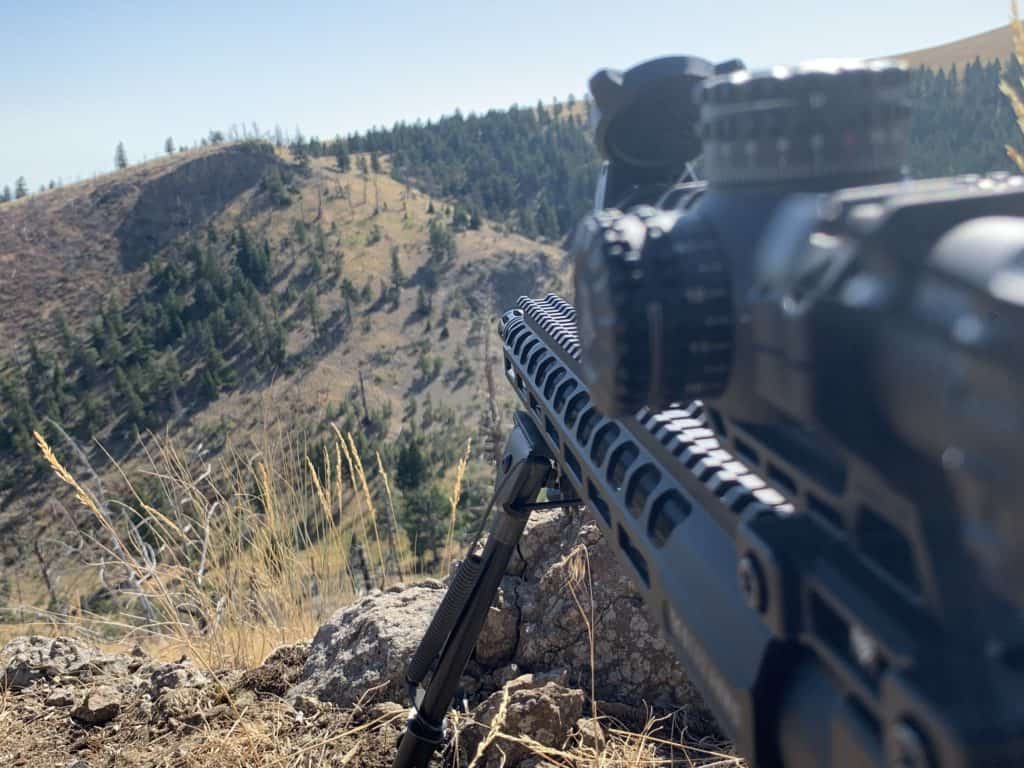
When using a ballistics calculator, the question of sight height or height over bore will come up. While running some calculations recently, I wondered how much sight height affects my ballistics. Are there any benefits to having a low or high-mounted scope?
Sight height does not have any positive or negative effect on your ballistics. Your sight height should be picked based on comfort and measured correctly to input into the ballistics equation.
I was surprised to find out that it had minimal effect on the things like point of impact but was very important when it came to comfort. Cant becomes the biggest issue but can be easily alleviated with a simple tool.
Affiliate Disclosure: This article may contain affiliate links. When you use these links, I earn a small commission from each sale generated at no cost to you. This commission helps me continue to put out free content. I work a full-time job that I am very happy with; therefore, I don’t need this commission and am not obligated to speak highly of any product. Everything written is my own opinion: the good, the bad, and the ugly.
- The Affect of Sight Height and Trajectory
- Sight Height: Comfort
- The Biggest Problem: Cant
- Sight Height Doesn't Matter That Much
The Affect of Sight Height and Trajectory
Sight height doesn’t change your bullet’s trajectory. However, it does affect your scope adjustments or holdover. First, we are looking at any advantage to having a higher or lower-mounted scope. Second, how much error is there if your sight height measurement is off? These calculations assume that you are holding the rifle level from shot to shot, which we will touch on later.
Is There an Advantage to Having a Higher or Lower Mounted Scope?
Yes and no. For the average shooter, there isn’t an advantage to having a high or low-mounted scope. It has a minimal effect as long as it is comfortable and allows you to get a good cheek weld. There is one exception here, shooting at extremely long distances.
A high-mounted scope will give the distance shooter the slight advantage of getting more adjustments out of their scope. The higher the scope, the steeper your rifle barrel angle when zeroed. Your scope will then have more elevation adjustments, allowing you to dial in for those extreme distances. This is why 20 MOA scope bases are so popular with long-range shooters; they raise the scope and increase the angle of the barrel.
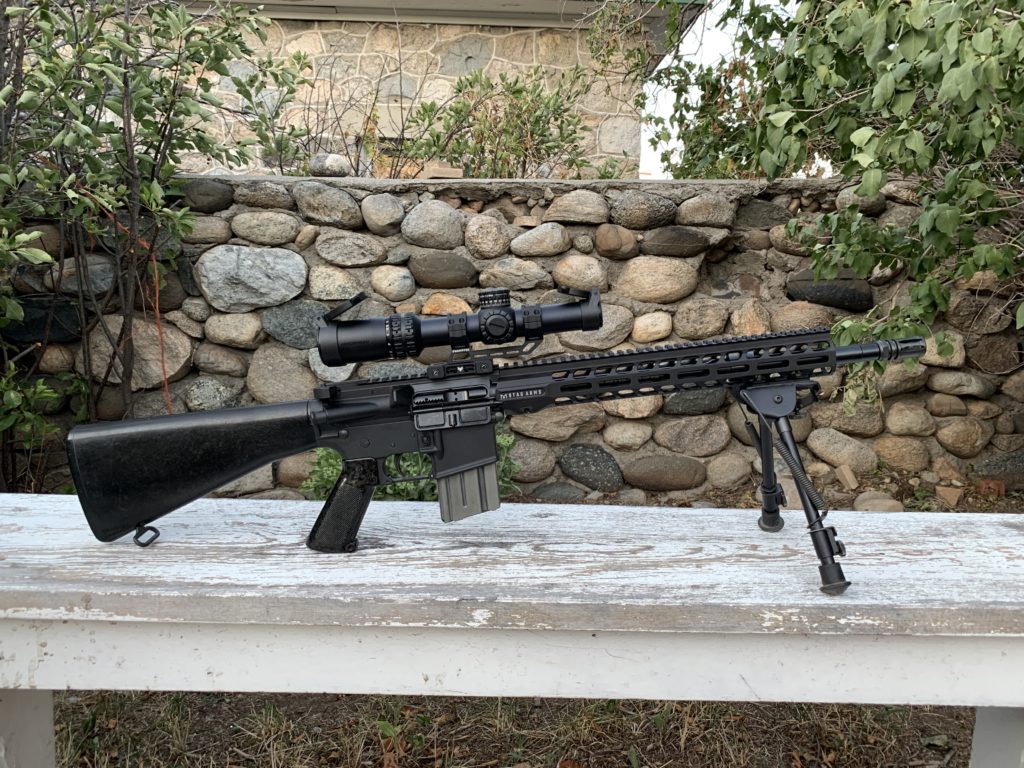
How Much Error is There if Your Sight Height Measurement is Off?
This error is directly correlated to the sight-in distance. The further away you sight your rifle, the less effect it has. Again, your sight height doesn’t change your trajectory. The bullet’s velocity also is a factor here; sight height will have a very minimal effect on flat-shooting cartridges under 300 yards.
How to Measure Sight Height with a Scope
For example, a 5.56 rifle loaded with 55 gr M193 ammo sighted in at 100 yards will only have a 4-inch difference in impact at 600 yards if you are off by 0.8″ on your sight height measurement. Sight height becomes a factor when choosing your zeroing range. The closer you zero your rifle, the more error you will have in your calculations shooting at long range.
Using the same example above but sighting in at 25 yards, your bullet will be off by 18 inches. In a more likely example, if you zero your rifle at 25 yards and enter 1.5″ sight height when your scope is truly 1.6″ over the bore, your calculations will be an inch off at 300 yards.
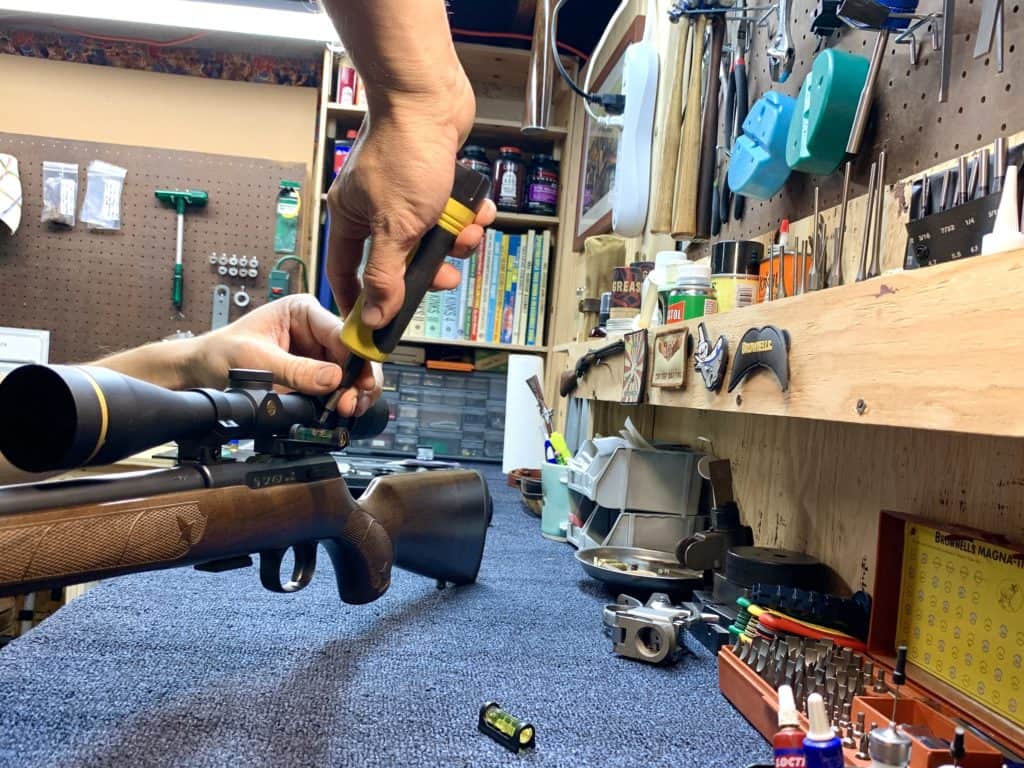
Where Sight Height Will Effect Your Shooting
Where you see an effect on sight height is precision shooting at sub-25 yards. Most shooters will never be in a scenario like this, but it does happen. Taking a seemingly effortless 10-yard shot at a squirrel can be difficult if your sight height isn’t known. From my understanding, these short-range shots are also pretty common in NRL-22 matches. Sight height has minimal effect on the perceived trajectory of your bullet.
What is the big takeaway here? First, take the time to measure your sight height correctly. If unable to, sight-in the rifle at a distance that it is most likely to be used.
Use coupon code KTG10 to get 10% off your order of $150 or more at Brownells.
Sight Height: Comfort
The most important thing about sight height is comfort. Your scope needs to be at a height that is comfortable for you. This can vary depending on the purpose of your rifle. For example, an AR-style rifle with a red dot will likely have a higher-mounted scope than a precision rifle. However, a consistent cheek weld is essential to both speed and accuracy.
Accuracy is consistency. Achieving a consistent cheek weld is part of that equation.
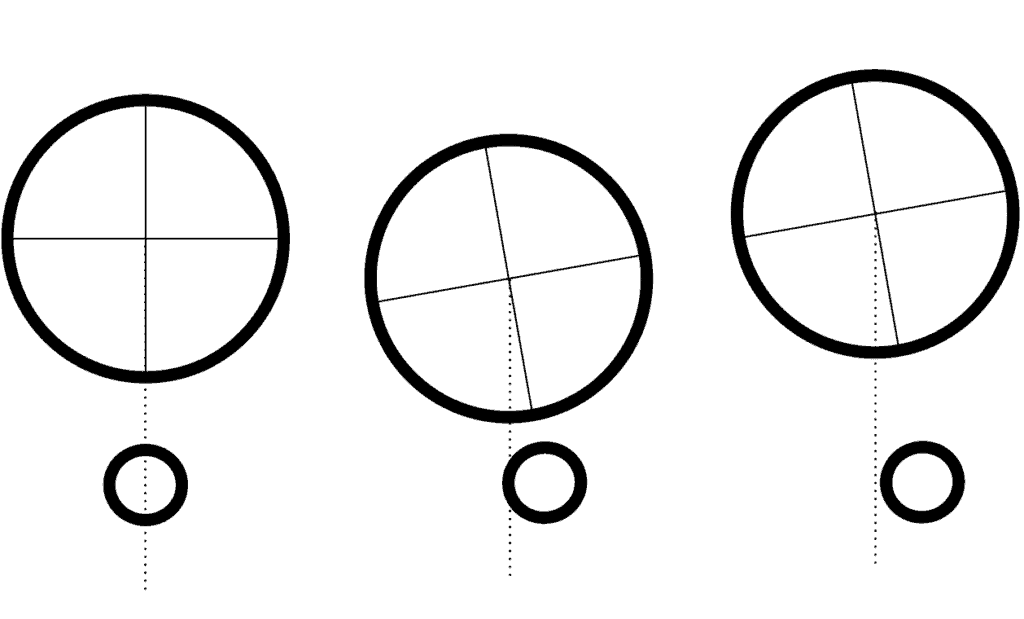
The Biggest Problem: Cant
The real problem you’ll run into with sight height is cant. Cant is something most shooters do without knowing; it is when your rifle isn’t held perfectly level. Assuming that your scope is mounted level, the adjustments in the turrets and the crosshair are to be used when held perpendicular to the ground. The slightest amount of cant can even throw your bullet off at distances as close as 100 yards.
Read More About Ballistics & Reloading!
The higher your scope is mounted, the more this problem becomes evident. The effects of cant are magnified the higher the scope is, and you will be further and further off. This is typically why you see hunting rifles with scopes mounted as low as possible. The diagram above is an exaggerated example of how 10 degrees of cant will affect your shot.
The good news is that this is pretty easy to account for. Mounting a level to your rifle or scope will allow you to keep your rifle level from shot to shot. If this isn’t practical, the safest bet is to mount the scope as low as comfort will allow.
Sight Height Doesn’t Matter That Much
I’d be lying if I didn’t think that rifle sight height had more of an effect than it does. Its impact on the trajectory is minimal if cant is out of the equation. Most problems associated with sight height can be alleviated by inputting the correct sight height in the ballistics calculator and putting a level on your rifle. Find what is comfortable for you and run your numbers using that height.
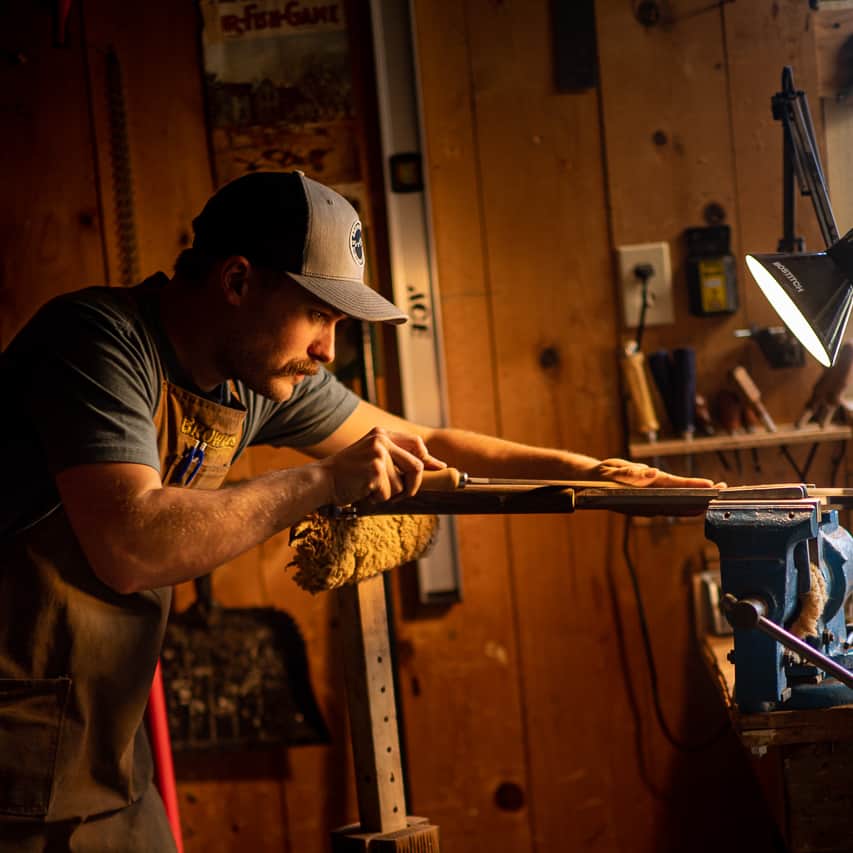
Written by: Kurt Martonik
Kurt is a Gunsmith, Reloader, Hunter, and Outdoorsman. He grew up in Elk County, Pennsylvania, where he became obsessed with the world of firearms. Following high school, Kurt enlisted in the United States Air Force as a Boom Operator, where he eventually rose to the position of Instructor. After his military service, he attended the Colorado School of Trades(CST) in Lakewood, CO for gunsmithing. Following graduation, he accepted a job at C. Sharps Arms in Montana, where he worked as a full time stockmaker and gunsmith.